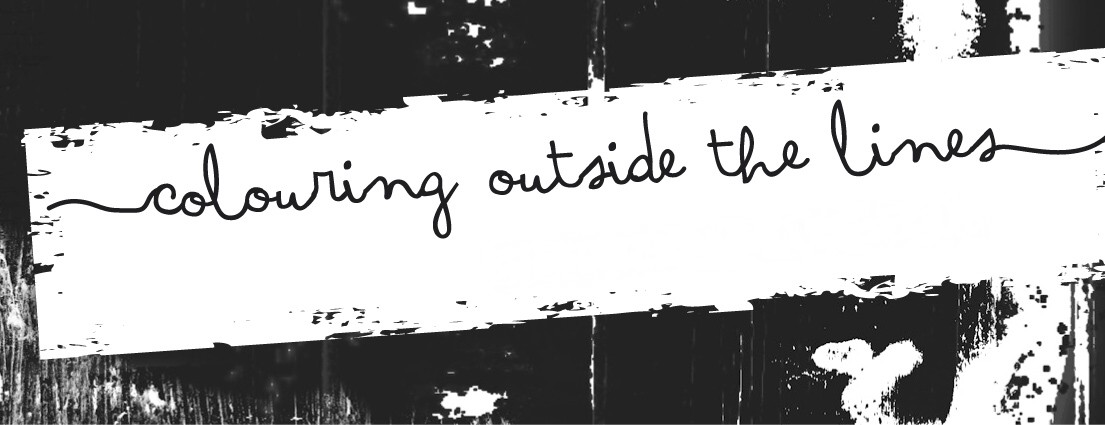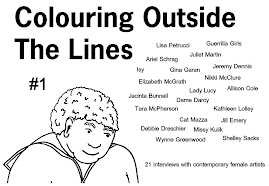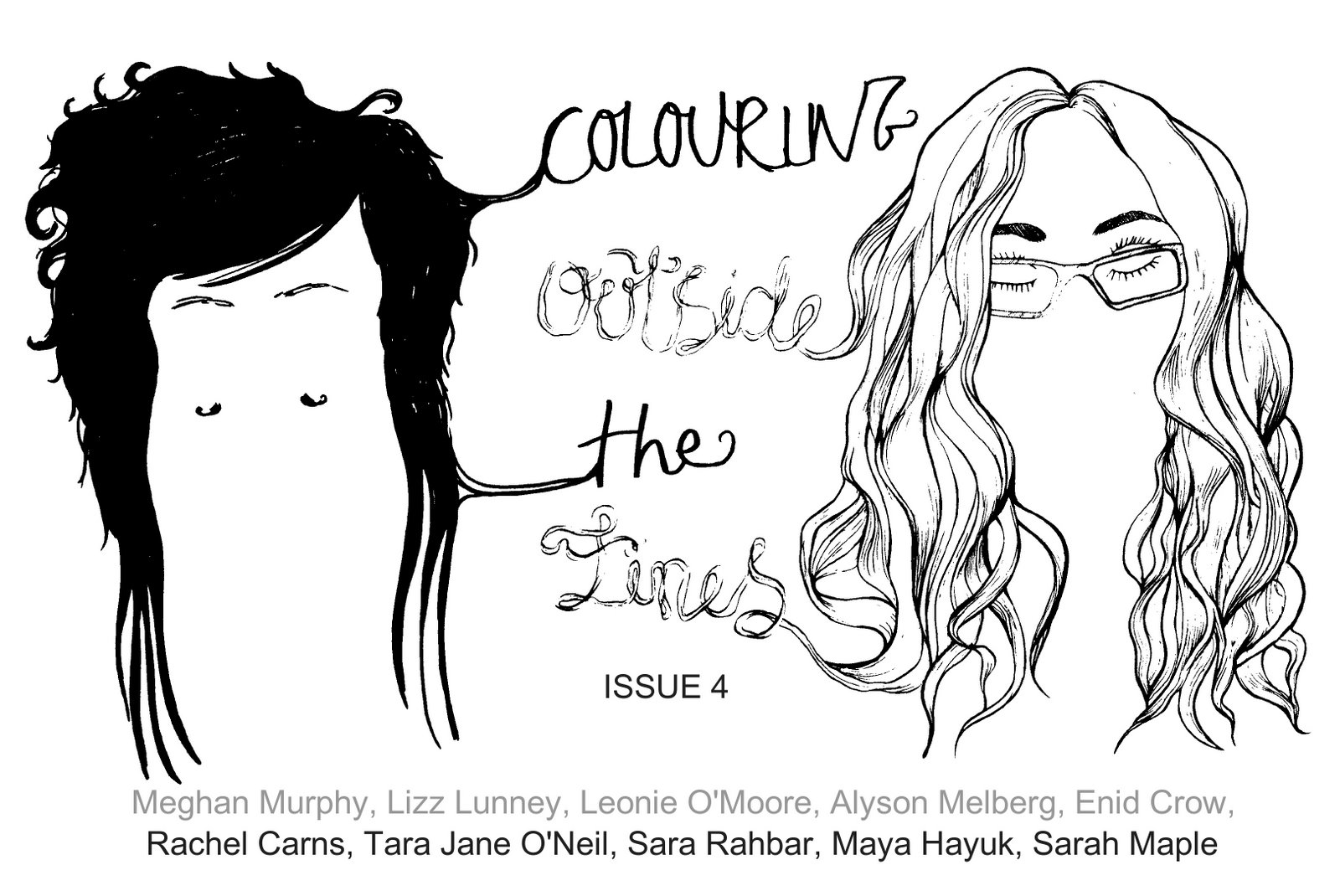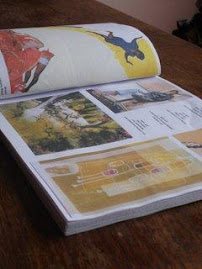



Heidi Burton
Location: Cambridge, UK
How would you describe your art? Illustrative in a light-hearted and quirky way, sometimes escapes to the sombre side..
Currently working on: A magazine cover, website banners, an ongoing personal project of overheard conversations, various collaborative illustration projects, and my entries for the International Moleskine journal exchange.
3 Likes: Thunderstorms, tea-drinking, shipping forecasts on the radio.
3 Dislikes: Insomnia, pigeons, things that reduce in size while increasing in price.
Daily Inspirations: Observations, everything I see and hear plays some part.
People & artists you admire: Tove Jansson, Haruki Murakami, Sylvia Plath, David Attenborough.
Favourite album(s) to listen to when working: Yann Tiersen ‘Goodbye Lenin’, The Coral ‘The Invisible Invasion’, Kimmo Pohjonen ‘Kielo’, The Zutons ‘Who Killed The Zutons’.
http://heidiburton.wordpress.com/
Interview date: March 2009.
Hi Heidi, What are you up to at the moment?
Hello! At the moment I’m procrastinating, drinking tea, looking forward to a psychedelic barn dance at the weekend, and brainstorming ideas for a project.
First things first I guess I’d like to ask about the sorts of stuff you like; what images keep you company in your studio / place(s) of work?
I have a wall of over 20 illustrations depicting many different things sent to me by various fantastic artists, along with a notice-board covered in postcards (for virtual escapism), and a mini washing line with all kinds of ideas on paper pegged to it.
Where do you work from?
I work from home, currently a cosy, creative corner of a room, with a desk, laptop, drawers of art materials, and the all-important tea-making facilities.
What is your artistic history? How did you get started, and how long have you been creating art, embracing your creativity, and working towards developing your current style and output?
Studying and practicing art never really seemed like a decision to make, it was my natural direction at any opportunity (school, college, university) so there was no real ‘start’ as such. How and what I draw/paint reflects my personality, although over the years my styles have become more defined due to getting to know myself better, and with advancements in technology I can work digitally now. It’s a bit tricky because I have two main working styles and they are polar opposites, cartoons with sweet/funny characters contrast hugely with my illustrating poetry by writers such as Sylvia Plath that tend to involve sombre paint styles. I guess there are many facets to the mind; mine seem to involve both the child-like and depressive hemispheres! When people ask me to create something for them, the first thing I ask is ‘which style are we going for here?’
Were your artistic endeavours encouraged from an early age, perhaps giving you a sense of perspective over your productivity and its worth?
My mother always said my work was great, no matter how bad it was, and my father was a bit more constructively critical – this provided a good balance of both encouragement, and a need to push myself further. My father used to draw blank comic strips for me and photocopy them, so as a child I spent a lot of time drawing, constructing narratives, and creating characters. My mother used to get me involved in all kinds of craft activities from making dolls house bits-and-pieces from clay, to sewing, and making candles. It led me to believe that creativity is an important part of everyday life, something I still believe!
Did having creative parents influence you and your pursuit of art?
My own creativity and pursuit of art is derived from both nature and nurture, I’m sure. My mother has always enjoyed crafts, dressmaking and designing, and my father is good at drawing, painting, and cartography. My parent’s home is host to (what I would describe as) a mini-library containing many arty books so as a teenager I enjoyed poring over the books about the golden age of Finnish art and the Pre-Raphaelites. Although my parents encouraged me to work hard on academic subjects at school, they saw art as an equal subject rather than an inferior one. Birthdays and Christmas always brought me new art materials (along with new socks of course). So I’d say yes, they did greatly influence my pursuit of art!
I have read you claim that you are mostly inspired by the simple things in life. How much of a role does the everyday play in your art, and does your art play in your everyday?
I’m quite analytical and observant; definitely one for details, so walking five minutes to the shop will more often than not give me some material to work with. Inspiration is everywhere, if I’m waiting at the bus stop with the same boring view, there is always something new to see if I look closely enough. These are the often over-looked details that I like to use in my work. I’m working on an ongoing project about overheard conversations, it’s amazing what people say in the girls toilets of pubs, shopping centres, changing rooms, etc. ‘Morris dancing and bestiality!’ being one of my favourite eavesdropped toilet snippets. Even when I’m not working on a project, my pocket journal is in my handbag, and if I forget to take it – I’m cursing the sketch I could have drawn, or the amazing overheard conversation I missed noting down. My camera comes everywhere too.
How crucial to your art is journaling; allowing yourself an on-tap way to capture your observations (observations that I read play a big part in your initial ideas)?
I use journals for different reasons. Some are for catching observations (see above), and some are like a sketchbook for doodles and ideas. I have one for writing interesting words, quotes, and poetic snippets, another especially for overheard conversations. Sometimes I just write about what I can see and hear. The crucial part is looking back at the journals and picking out the interesting bits. Sometimes a sentence written five months ago will spark a visual image that needs to be explored. There are things written that were insignificant at the time that are pure gold when looking back!
Location: Cambridge, UK
How would you describe your art? Illustrative in a light-hearted and quirky way, sometimes escapes to the sombre side..
Currently working on: A magazine cover, website banners, an ongoing personal project of overheard conversations, various collaborative illustration projects, and my entries for the International Moleskine journal exchange.
3 Likes: Thunderstorms, tea-drinking, shipping forecasts on the radio.
3 Dislikes: Insomnia, pigeons, things that reduce in size while increasing in price.
Daily Inspirations: Observations, everything I see and hear plays some part.
People & artists you admire: Tove Jansson, Haruki Murakami, Sylvia Plath, David Attenborough.
Favourite album(s) to listen to when working: Yann Tiersen ‘Goodbye Lenin’, The Coral ‘The Invisible Invasion’, Kimmo Pohjonen ‘Kielo’, The Zutons ‘Who Killed The Zutons’.
http://heidiburton.wordpress.com/
Interview date: March 2009.
Hi Heidi, What are you up to at the moment?
Hello! At the moment I’m procrastinating, drinking tea, looking forward to a psychedelic barn dance at the weekend, and brainstorming ideas for a project.
First things first I guess I’d like to ask about the sorts of stuff you like; what images keep you company in your studio / place(s) of work?
I have a wall of over 20 illustrations depicting many different things sent to me by various fantastic artists, along with a notice-board covered in postcards (for virtual escapism), and a mini washing line with all kinds of ideas on paper pegged to it.
Where do you work from?
I work from home, currently a cosy, creative corner of a room, with a desk, laptop, drawers of art materials, and the all-important tea-making facilities.
What is your artistic history? How did you get started, and how long have you been creating art, embracing your creativity, and working towards developing your current style and output?
Studying and practicing art never really seemed like a decision to make, it was my natural direction at any opportunity (school, college, university) so there was no real ‘start’ as such. How and what I draw/paint reflects my personality, although over the years my styles have become more defined due to getting to know myself better, and with advancements in technology I can work digitally now. It’s a bit tricky because I have two main working styles and they are polar opposites, cartoons with sweet/funny characters contrast hugely with my illustrating poetry by writers such as Sylvia Plath that tend to involve sombre paint styles. I guess there are many facets to the mind; mine seem to involve both the child-like and depressive hemispheres! When people ask me to create something for them, the first thing I ask is ‘which style are we going for here?’
Were your artistic endeavours encouraged from an early age, perhaps giving you a sense of perspective over your productivity and its worth?
My mother always said my work was great, no matter how bad it was, and my father was a bit more constructively critical – this provided a good balance of both encouragement, and a need to push myself further. My father used to draw blank comic strips for me and photocopy them, so as a child I spent a lot of time drawing, constructing narratives, and creating characters. My mother used to get me involved in all kinds of craft activities from making dolls house bits-and-pieces from clay, to sewing, and making candles. It led me to believe that creativity is an important part of everyday life, something I still believe!
Did having creative parents influence you and your pursuit of art?
My own creativity and pursuit of art is derived from both nature and nurture, I’m sure. My mother has always enjoyed crafts, dressmaking and designing, and my father is good at drawing, painting, and cartography. My parent’s home is host to (what I would describe as) a mini-library containing many arty books so as a teenager I enjoyed poring over the books about the golden age of Finnish art and the Pre-Raphaelites. Although my parents encouraged me to work hard on academic subjects at school, they saw art as an equal subject rather than an inferior one. Birthdays and Christmas always brought me new art materials (along with new socks of course). So I’d say yes, they did greatly influence my pursuit of art!
I have read you claim that you are mostly inspired by the simple things in life. How much of a role does the everyday play in your art, and does your art play in your everyday?
I’m quite analytical and observant; definitely one for details, so walking five minutes to the shop will more often than not give me some material to work with. Inspiration is everywhere, if I’m waiting at the bus stop with the same boring view, there is always something new to see if I look closely enough. These are the often over-looked details that I like to use in my work. I’m working on an ongoing project about overheard conversations, it’s amazing what people say in the girls toilets of pubs, shopping centres, changing rooms, etc. ‘Morris dancing and bestiality!’ being one of my favourite eavesdropped toilet snippets. Even when I’m not working on a project, my pocket journal is in my handbag, and if I forget to take it – I’m cursing the sketch I could have drawn, or the amazing overheard conversation I missed noting down. My camera comes everywhere too.
How crucial to your art is journaling; allowing yourself an on-tap way to capture your observations (observations that I read play a big part in your initial ideas)?
I use journals for different reasons. Some are for catching observations (see above), and some are like a sketchbook for doodles and ideas. I have one for writing interesting words, quotes, and poetic snippets, another especially for overheard conversations. Sometimes I just write about what I can see and hear. The crucial part is looking back at the journals and picking out the interesting bits. Sometimes a sentence written five months ago will spark a visual image that needs to be explored. There are things written that were insignificant at the time that are pure gold when looking back!
You hold a diploma in fine art & an illustration degree. Does your art education play a key role in the artworks that you create today?
How crucial do you think arts education is to creativity, and yours in particular?
Education has definitely shaped the work I create today, partly due to how it has shaped me as an individual, and also by forcing me to focus on researching and producing defined projects. The great thing about these courses was being around creative people all the time, and also learning new skills such as printmaking, book-binding, web design and animation, methods of illustration I may not have encountered otherwise. We had great writing workshops, life-drawing sessions, and art theory also. I believe that although an arts education was right for me, there should be less focus on gaining a degree, and more focus on the experience itself.
Some of the greatest works that you produce, in my opinion, are the altered Moleskine notebooks that you create. (I am also aware that you are part of Moleskine exchange projects alongside other artists, and that one of your personal journals was exhibited at Moleskine's very own exhibitions in London and Tokyo.)
What does creating such pieces afford your work that is not satisfied by working on and with ‘traditional’ art mediums such as canvas?
Journals, particularly Moleskine journals/notebooks, are like little canvases to me. I think the brown card covers are a platform for alteration, as with manilla envelopes. Unlike the traditional canvas, journals are portable, and functional, they are sometimes private too, like a diary. They make nice little gifts because most people could do with a handy notebook, and they can be customised for the recipient for a personal touch. Altered journals are also an affordable way of owning original artwork. What I love about altering the journals is to cut a hole in the cover and adding a surprise element inside, not something attainable with a canvas!
You have also created many greetings cards of your illustrations. In these smaller pieces of your work being affordable and designed to be shared, sent, and given to others, do you think such art works and products act, by their very nature, as an avenue for more people, worldwide, to own or find out about your art?
What other roles does the creation of greetings cards hold for you that inspires you to make and sell them?
I started making prints of my work and realised their limitation is due to the nature of them being purely for display purposes. I was illustrating many events and celebrations throughout the year just as a means of personal expression, and people would ask me if these images were available in greeting card form. I decided to comply with these suggestions and create artwork for sharing, and I’m a huge fan of mail art, so it made good sense. Postcards are seen by people all the way from post-box to letterbox, quite a journey! I do believe that using different formats for illustration promotes work to a wider audience, because some people are specifically searching for a greeting card, and stumble upon an entire gallery of work.
One of the things that I love about both your Moleskine pieces, and your cards, is your use of simple pen ink to create such beautifully crafted illustrations.
What are your favourite materials and tools to work with?
I used to find pen and ink work to be daunting, a level of confidence is needed for bold, inerasable lines. I now realise it’s ok to make mistakes, because nobody else needs to see them! Also my line drawings, once scanned, can be edited digitally. Other than pens, I love to paint with acrylics, inks, watercolour, and to draw with pencils, as well as anything else that can make a mark. Digital illustration using Photoshop is high on my list of tools at the moment, and the scanner has its place.
Having been the recipient of some of your work, I know first hand that you go to great lengths creating special packaging for customers; they’re practically artworks in themselves!
Is it important to you to ‘spoil’ your customers? Or is more that you can never cease being creative – even when it comes to envelopes?!!
When selling work through an online (handmade) marketplace I think it’s important, but mostly just nice, to send something personal to the recipient. I wish for people to smile upon receiving their order, it is a good first impression, but mostly I just love drawing on everything. A customer once said that although their order was a gift for someone else, it was like receiving a present of their own - that made me happy. Having worked for the postal service in the past, I know it brightened my day to see the odd illustrated envelope travelling through the system. Everyone’s a winner!
Would you say that you were part of any art communities, in Cambridge, or elsewhere?
If so, what does being part of such a community provide you with, and are there any individuals in your community who inspire or encourage you, or whose work you are particularly fond of?
I took part in an exhibition here in Cambridge last year that brought together local artists, and would love to do that again. My university was a college purely for art students, so there was a great community of artists on a variety of creative courses. This was fantastic for bouncing ideas back and forth, and also for crossing over into different mediums. I was inspired by the work of my peers, especially in how differently they each responded to the same set brief. Some would take the safe option while others really pushed the boundaries, it was great to learn from a variety of individuals, and be a part of the group.
I read you state, “Imperfect drawing has so much more character and energy than that of accurate perspectives and flawless shading. You can try TOO hard. Draw now, think later!”
Is ‘perfection’ and ‘elitism’ in art something that concerns you and your practice?
For a long time I believed that the best artists produced photo-realistic work, because it requires a lot of skill and talent to capture a subject realistically. Although I still admire photo-realism (a style I personally find very difficult and laborious), I realised that quick and subconscious artwork has a perfection of its own because it captures something raw about the subject, I don’t see this kind of work as inferior at all. Elitism isn’t something that concerns me, each to their own taste!
I am very interested in how and where women gain access to their own confidence, and self-belief -- especially in terms of how they are able to produce and create with a sense of assurance, belief and certainty.
What is your personal relationship with confidence?
During my degree I was lacking in confidence due to the high standard of work being produced by my peers, and the expectations of my own work. Lack of self-belief would show in my concepts, my images, and the way I discussed my work. Now there is a lot pressure, there is nobody to disappoint but myself, and over time this freedom has helped build my confidence. When it comes to the ‘carrot or the stick’ as methods of achieving success, I’m definitely one for the carrot approach!
I read you say that, “With all the serious issues plaguing our planet, I believe it is important to be as silly as possible when 'appropriate' - to remain light-hearted and positive”
Would you say that this a mantra that guides your artistry?!
I wouldn’t say it’s a mantra exactly, my child-like spirit needs to be expressed somehow, and it wasn’t long ago that it was silenced (by myself) through fear of being frowned upon by ‘serious’ folk. When people started to embrace it I figured it’s ok to let a little of the eccentric out into the world, and I’m certainly not the only one. Take Willy Wonka for example “A little nonsense now and then is relished by the wisest men”. He knew what he was talking about.
What is your favourite part of artistic creativity? Why do you keep on going and doing what you do?
When something is in-built, it’s part of everything you do, that’s why I keep doing what I do. My favourite part of artistic creativity is in the ‘doing’. Also after labouring over a piece of work, to see the finished piece is a satisfying conclusion.















No comments:
Post a Comment